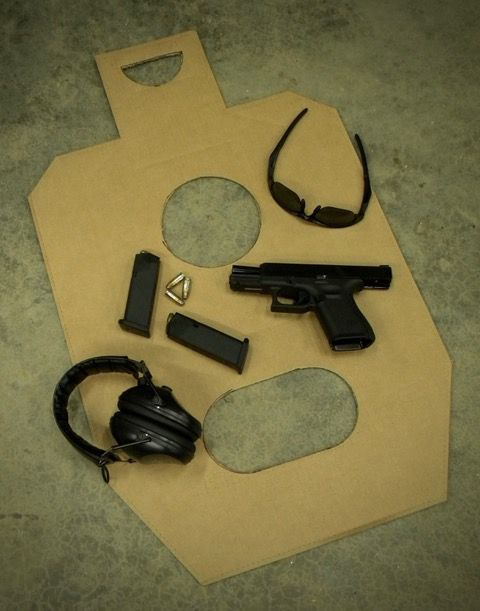 |
The only two things you can control in a confrontation is what you do, and the speed at which you perform. This is especially true if you are required to engage the threat with accurate fire. You’re forced to shoot. The speed you fire is dictated by size of the mark to be hit and distance to that target. Time is a factor. The hits need to be effective and efficient. You fire as quickly as possible, while maintaining the necessary accuracy. The “Control Drill” is perfect for developing the balance between speed and accuracy. Plus, it’s easy to set-up and shoot.
Start with a negative target. Negative targets – anything outside the open area is a miss – are great for training and practice. Too many people get caught up in exactly where the bullet went. Where the last round hit isn’t important; it’s history - nothing you can do about it. And if that one’s not effective, you should be thinking about where you’re going to put the next hit. Plus, in real life you won’t see the hit on the threat - they’re unlikely to be standing still while you hit them. As I like to tell people, if you have to look to see where the hit went you haven’t actually learned how to shoot. This is assuming you’ve fired the weapon so you know it’s zeroed and rounds hit where you intend.
Negative targets are also great for developing efficiency. In order to discover at what speed you can fire, you have to determine what’s “too fast.” Negative targets let you know immediately what too fast is. Any round that actually hits cardboard means you fired too fast (usually “too fast” on pressing the trigger).
I use negative targets with different size zones. The areas representing the head – ocular cavity, center mass of the chest and the pelvic area are cut out. The different size and shaped holes require you to regulate speed based on the accuracy required. The larger the hole the quicker you can fire; smaller targets require you to slow down. Vary the distance from close to far. Now, you’re starting to develop “control.”
But again, first you have to learn what’s too fast. The goal is to exceed your abilities, to miss. Then, control your speed, and slow down until all hits are “good.” To develop even more discipline, short load your mags or throw some dummy rounds in your magazines. There’s no such thing as practicing these techniques too much. When you have to reload or clear a stoppage, do it at a speed that is free of mistakes. Properly. Once the weapon is running again, regulate your speed to ensure the next shot is a hit. It’s also a good idea to add some movement in, especially when drawing from concealment.
Responding to an attack is about what you do and the speed of your actions. If you’re not controlling these two things it means the threat is in control. You cannot let the offender dictate the speed you perform, especially when firing. The Control Drill is easy to set up. There’s no time limit. You fire as many shots as you want. You shoot as quickly as possible, yet slow enough to get good hits. Self-control begins on the range, but applies to other aspects of life too.
Tiger McKee is director of Shootrite Firearms Academy. He is the author of The Book of Two Guns, AR-15 Skills and Drills, has a regular column in American Handgunner and makes some cool knives and custom revolvers. Visit Shootrite’s Facebook page for other details.
